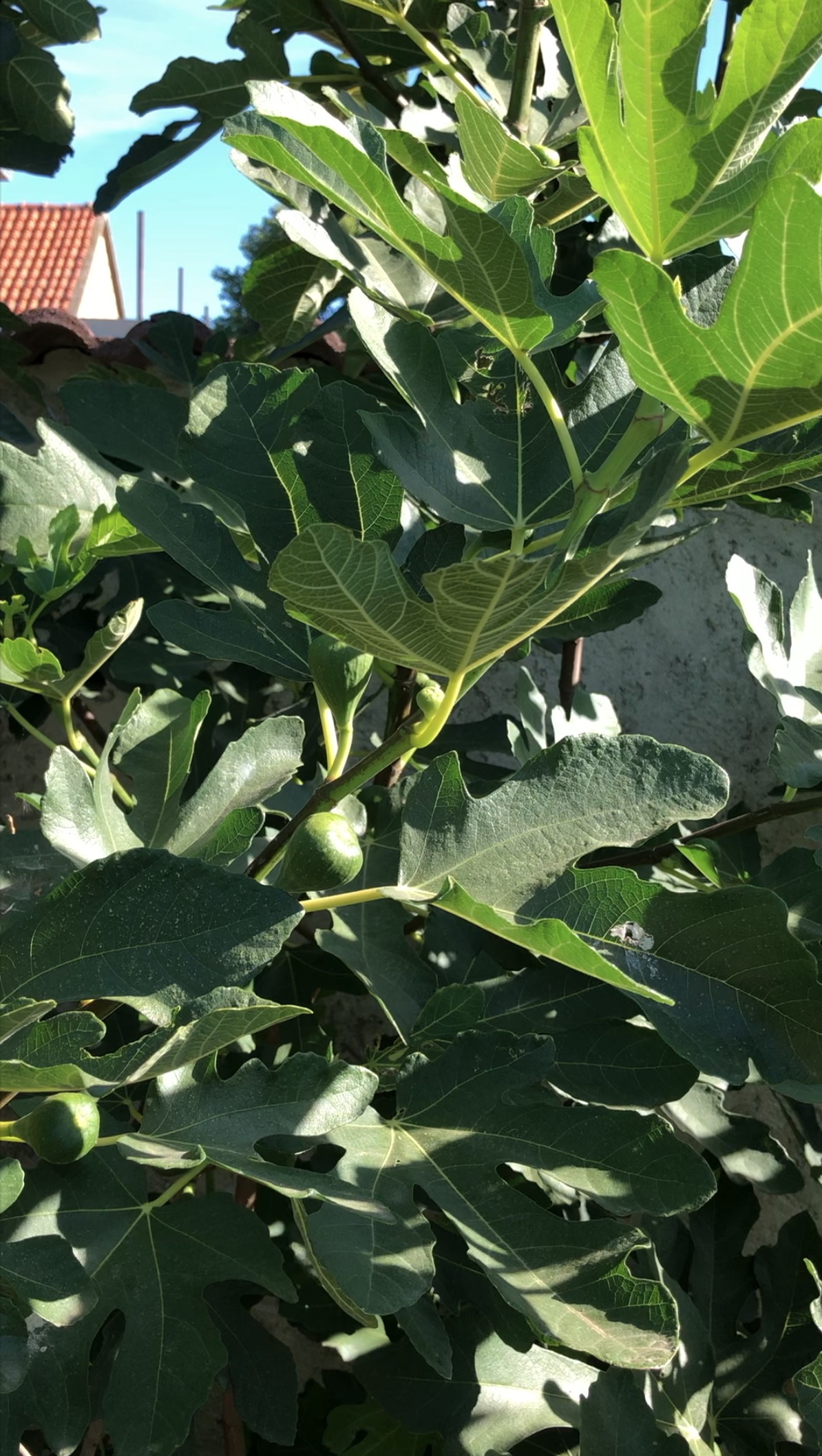
The common fig (Ficus carica) is a deciduous tree in the mulberry family (Moraceae) native to an area extending from the eastern Mediterranean to southwestern Asia. It is usually considered to be a synonym of Ficus carica, but it has been distinguished as a separate species by some botanists. It is the natural and wild ancestor of the cultivated fig, grown for its fruit. The fruit of the wild common fig is an important food resource for a number of birds and animals, including wasps, bees, and some mammals.
The common fig is a large deciduous shrub or small tree, typically 6–10 m (20–33 ft) tall, with a dense, spreading crown. The trunk is short and often forked, and the branches are spreading. The bark is smooth and gray, and the twigs are stout. The leaves are large and simple, with a lobed or deeply divided margin. They are borne alternately on the stem. The leaf stalk is short, and the leaf blade is usually 3–10 cm (1.2–3.9 in) long and 2–7 cm (0.79–2.76 in) wide. The flowers are small and inconspicuous, with male and female flowers borne on the same plant. The fruit is a fleshy, hollow, pear-shaped receptacle with a small opening at the apex, which ripens and enlarges and may split open to release the seeds. The common fig is monoecious, with male and female flowers borne on the same plant. The flowers are small and inconspicuous, with male and female flowers borne on the same plant. The fruit is a fleshy, hollow, pear-shaped receptacle with a small opening at the apex, which ripens and enlarges and may split open to release the seeds. The common fig is cultivated for its fruit, which is eaten fresh or dried, or used to make wine, jam, or syrup. The leaves are used to wrap food for cooking. Sap from the tree can be used to make a chewing gum. Bark and leaves are used to make a yellow dye. Wood is used for fuel and for making charcoal, baskets, boxes, brooms, and small articles of furniture. It is a good wood for carving. It is used in the construction of buildings, boats, and vehicles. The tree is grown as an ornamental plant in parks and gardens.
The map shows known occurrence points of Ficus carica recorded in scientific biodiversity databases.
Source: GBIF.org — Global Biodiversity Information Facility
Loading scientific articles about Ficus carica...